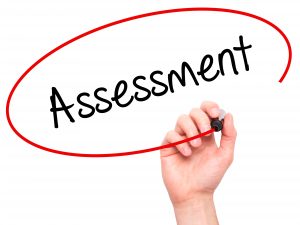There is no generally agreed precise definition of what constitutes consciousness but two components are generally accepted: wakefulness and awareness of self.
- Wakefulness refers to how alert a person is.
- Awareness refers to the person’s knowledge of their internal (thoughts, sensations, pain, emotions etc) and external environments. Awareness means that the person is able to perceive stimuli. The person may or may not be able to initiate voluntary movement.
Wakefulness is principally determined by the arousal system (or ascending reticular formation) located in the brainstem. Awareness, by contrast, involves various parts of the cortex of the cerebrum and their connections.
 Assessment of Level of Consciousness
Assessment of Level of Consciousness
Previously a number of imprecise terms such as confusional state, delirium, stupor and coma were used to describe impaired consciousness after brain injury. In 1974 Professors Teasdale and Jennett working in Glasgow devised the Glasgow Coma Scale (GCS) as a standardised method to describe different levels of consciousness in terms of eye opening, verbal response and motor response. In describing and monitoring individual patients the three responses of the GCS should be used. The scores range from 3 (deep unconsciousness) to 15 (fully alert). This is useful in classifying severity of injury as a predictor of either mortality or longer term outcome.